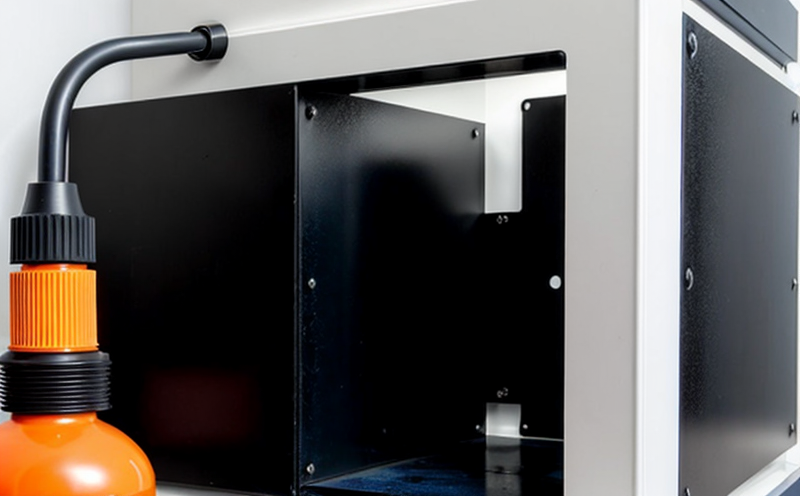ISO 16474 UV Exposure Testing of Coatings and Thin Films
The ISO 16474 standard is a cornerstone in the evaluation of coatings and thin films exposed to ultraviolet (UV) radiation. This testing method is essential for quality managers, compliance officers, R&D engineers, and procurement teams involved with nanocoatings and surface treatments. This procedure ensures that materials will withstand environmental exposure to UV radiation without degrading, which can significantly impact their performance in real-world applications.
The ISO 16474 standard provides a standardized approach to UV exposure testing, enabling consistent results across different laboratories and jurisdictions. This is particularly important for nanocoatings used in various sectors such as automotive, electronics, and aerospace, where durability under UV radiation is critical.
During the testing process, samples are exposed to controlled levels of UV radiation that simulate outdoor conditions. The goal is to assess how well the coating or thin film can maintain its properties after exposure. This includes evaluating color stability, gloss retention, adhesion strength, and other physical characteristics that may be affected by UV radiation.
The testing protocol typically involves preparing a sample according to specified dimensions and then placing it in an environmental chamber equipped with UV lamps. The exposure time is carefully controlled based on the expected service life of the product. After exposure, the samples are evaluated for changes in appearance, texture, or other measurable properties that indicate degradation.
One critical aspect of ISO 16474 testing is the choice of appropriate UV lamps and their spectral output. Different types of UV radiation (A, B, C) have varying effects on materials, so selecting the correct lamp type is crucial for accurate results. Additionally, the test chamber should be equipped with temperature control to simulate real-world conditions accurately.
The testing process also involves meticulous sample preparation. This includes cleaning the samples thoroughly and ensuring they are free from contaminants that could affect the outcome of the test. Proper handling during exposure is essential to prevent incidental damage or contamination.
After the test, detailed reports are generated summarizing the results. These reports include before-and-after images, measurements of color change, gloss retention data, adhesion tests, and other relevant metrics. The report also provides a comparison with baseline values measured prior to exposure.
The ISO 16474 standard ensures that all testing is conducted under controlled conditions, making it easier for manufacturers to meet regulatory requirements and gain market acceptance. By following this protocol, companies can ensure their products will perform reliably in challenging environmental conditions.
Industry Applications
| Industry Sector | Application Example |
|---|---|
| Aerospace | Evaluating the durability of protective coatings on aircraft surfaces. |
| Automotive | Determining the longevity of UV-resistant paint finishes. |
| Electronics | Assessing the reliability of thin film components exposed to sunlight. |
| Bioengineering | Testing the stability of medical devices and implants under UV exposure. |
The ISO 16474 standard is widely used across various industries where nanocoatings play a crucial role. This includes aerospace, automotive, electronics, bioengineering, and more. In each sector, the ability of coatings to withstand UV radiation can significantly impact product performance and longevity.
Eurolab Advantages in ISO 16474 Testing
At Eurolab, we bring extensive expertise and state-of-the-art facilities to our ISO 16474 UV exposure testing services. Our team of experienced engineers and scientists ensures that every test is conducted with precision and accuracy.
- Comprehensive Service Offerings: We cover all aspects of nanocoatings and surface treatments, providing a full suite of testing options tailored to your specific needs.
- Advanced Equipment: Our laboratories are equipped with the latest UV exposure chambers and other necessary instruments to deliver reliable results.
- Certified Personnel: Our staff is trained in accordance with international standards, ensuring that every test adheres to best practices.
- Comprehensive Reporting: We provide detailed reports that go beyond basic pass/fail criteria, offering insights into the performance of your materials under UV exposure.
Whether you are conducting routine quality checks or developing new products, Eurolab’s ISO 16474 UV exposure testing services can help ensure your nanocoatings meet the highest standards for durability and reliability.
International Acceptance and Recognition
- The ISO 16474 standard is recognized globally, ensuring consistency in testing procedures across different countries and regions.
- This standard has been adopted by numerous international organizations including ASTM, EN, and IEC to provide a uniform approach to UV exposure testing.
- Many regulatory bodies around the world use this standard as a benchmark for evaluating nanocoatings and surface treatments.
- The widespread acceptance of ISO 16474 facilitates trade between countries by ensuring that tests conducted in one country will be recognized and accepted elsewhere.
The international recognition of ISO 16474 underscores its importance in the global market. By adhering to this standard, manufacturers can ensure their products meet stringent quality standards and are competitive on a worldwide scale.





